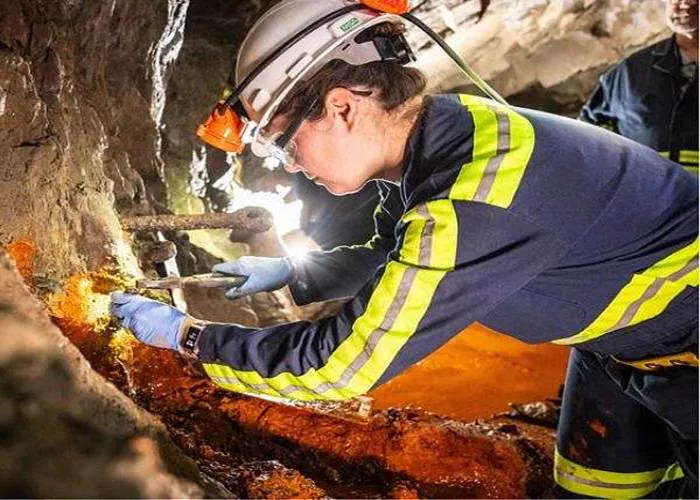A new study led by researchers, including a University of Michigan scientist, has provided fresh insights into the journey of gold from Earth’s mantle to the surface. The research identifies a gold-sulfur complex that plays a crucial role in the movement of gold, particularly in areas near volcanoes along the Pacific Ring of Fire.
Gold deposits found in volcanic ore near subduction zones, such as those in the Pacific Ring of Fire, are thought to originate deep within Earth’s mantle. Magma transports gold upward, but the mechanisms behind this process have remained a subject of debate. By utilizing advanced numerical modeling, the research team has identified the specific conditions that enrich magmas with gold as they ascend to the surface.
A key breakthrough in the study is the discovery of a gold-trisulfur complex, a long-contested phenomenon. Adam Simon, a professor of Earth and Environmental Sciences at the University of Michigan and a co-author of the study, explained the findings: “This thermodynamic model is the first to confirm the presence of the gold-trisulfur complex at these conditions, offering a plausible explanation for the high concentrations of gold in certain mineral systems found in subduction zones.”
The gold-trisulfur complex forms at specific pressures and temperatures approximately 30 to 50 miles beneath active volcanoes. These conditions enable gold to bond with trisulfur, increasing its mobility in magma and allowing it to travel to the Earth’s surface. The research, published in the Proceedings of the National Academy of Sciences, offers significant advancements in understanding the formation of gold deposits.
Subduction zones, where tectonic plates like the Pacific plate slide beneath others, are known to host many gold-rich volcanic systems. These zones provide the necessary pathways for magma, and by extension, gold, to ascend to the surface. “Active volcanoes along the Pacific’s continental edges—ranging from New Zealand to Chile—form over subduction zones. The processes that trigger volcanic eruptions are also responsible for gold deposit formation,” Simon noted.
While gold typically remains stable in the Earth’s mantle, the study explains that fluids containing trisulfur ions from the subducting plate can trigger gold to bond with trisulfur, forming a highly mobile gold-trisulfur complex. Previous research has explored gold-sulfur interactions, but this study is the first to present a thermodynamic model that confirms the existence and role of the gold-trisulfur complex in gold transport.
The model developed by the team is based on lab experiments that simulate the pressure and temperature conditions found in natural settings. The results provide a more accurate understanding of why certain subduction zones are rich in gold and could aid in gold exploration efforts.
“These findings improve our understanding of gold deposit formation and could have a positive impact on exploration,” Simon concluded.
Related topics:


